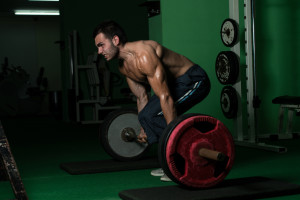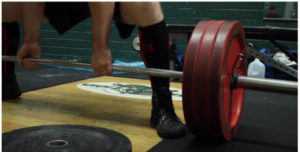 The focus of Precision Point Training is on finding your strength training zone. This basically refers to training hard enough, but not too hard to make consistent predictable strength gains. Most lifters try to obtain consistent strength gains by utilizing complex training cycles, but a simpler solution is to leave no room for error when it comes to training hard enough but not too hard. Just about everything I write about will refer to some aspect of this, but in the next three articles I am going to deviate from that and do a series of three articles on exercise technique for the deadlift, squat and bench press. Learning the proper technique for these exercises can make a big difference in how much you lift, and can keep you from unnecessary injury.
The focus of Precision Point Training is on finding your strength training zone. This basically refers to training hard enough, but not too hard to make consistent predictable strength gains. Most lifters try to obtain consistent strength gains by utilizing complex training cycles, but a simpler solution is to leave no room for error when it comes to training hard enough but not too hard. Just about everything I write about will refer to some aspect of this, but in the next three articles I am going to deviate from that and do a series of three articles on exercise technique for the deadlift, squat and bench press. Learning the proper technique for these exercises can make a big difference in how much you lift, and can keep you from unnecessary injury.
The Deadlift
In this article I will be discussing the deadlift. If the deadlift feels awkward, unsafe, or you’ve hurt yourself doing it in the past, I suggest putting your ego aside, perfecting your form with light weights, and gradually adding on weight while maintaining perfect form. This is exactly what I had to do to improve my deadlift.
There are two basic versions of the deadlift. The first version is the conventional deadlift technique with the feet close together, hips back, and back straight. The second common technique is the sumo deadlift which is done with a wide stance, and toes and knees pointed outward. Some lifters prefer a variation that is a cross between a conventional deadlift and a sumo deadlift.
Different Proportions Requires Different Techniques
One of the reasons for different deadlifting techniques is the variation in body proportions from one lifter to the next. The best case scenario for ideal proportions would be long arms, short legs, and an upper leg that is short in proportion to the lower leg. The worst case scenario would be short arms, long legs, and a long femur with low knees. Most people are somewhere between the two extremes and will have variations in mobility that dictate what type of deadlifting technique is best for them.
Coaching the Deadlift
Perhaps one of the most articulate coaches at explaining deadlift technique is Eric Cressey, who is a great deadlifter himself. If you click on the link to his website (click here for Eric Cressey’s Website), you will find a sign up form for his free deadlift videos that are brief, concise, and extremely informative. He explains the conventional deadlift, sumo deadlift, and trap bar deadlift. Eric is incredibly knowledgeable.
The Conventional Deadlift
Mark Bell is an excellent powerlifting instructor and gives good instructions in the following video for the basics of a conventional deadlift.
The Sumo Deadlift
Garrett Blevins is an outstanding powerlifter who gives good instructions for the sumo deadlift in the following video.

Perhaps the best form I’ve seen for the sumo deadlift belong to Andrew Belyaev and Laura Phelps. Both seem to have the right structure and mobility for a very wide sumo stance and both lift massive weights though neither are huge in physical size. Andrew Belyaev is shown in the first video and Laura Phelps in the second video.
The deadlift is a great exercise if you master the form, but it can be a treacherous exercise if you do not use good technique. I want to finish this discussion on deadlift by saying I do not recommend grinding out slow heavy deadlifts as it is very difficult to maintain good form when doing so with the deadlift. Instead, go for a smooth, fluid lifting motion. In the next article, I will discuss lifting technique for the bench press. Best of training to you.
